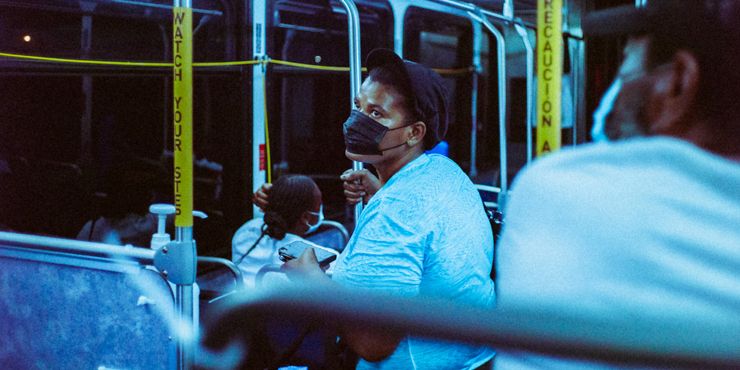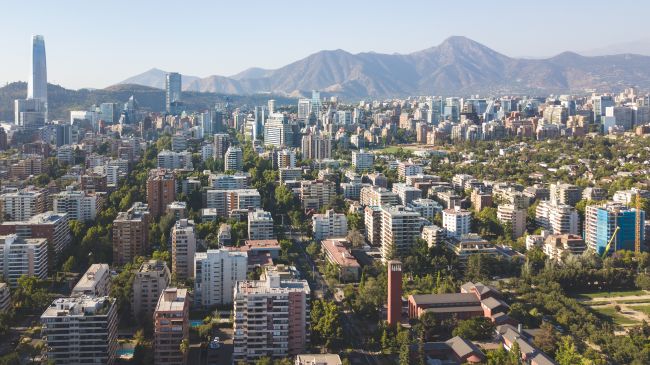Smart design, education and encouragement: managing transit ridership recovery post COVID-19
As COVID-19 related restrictions begin to ease across the globe, travel in our cities and towns will slowly increase.

As COVID-19 related restrictions begin to ease across the globe, travel in our cities and towns will slowly increase. Before this happens on a large scale, the transportation industry must consider when, why, and how daily travel will begin to take place, and we must use tools such as design strategy and Transportation Demand Management (TDM) to ensure the path back to ‘normal’ is safe, efficient, and environmentally friendly.
With shops, restaurants, and offices planning to reopen their on-site uses, transit operators need to consider the importance of helping passengers maintain physical distance at both on-board vehicles and at stops and terminals. It’s inevitable that these restrictions will reduce capacity and therefore overall ridership rates in the short term, but what might be less obvious are the secondary barriers to ridership they create, further threatening long-term financial recovery for transit providers, where the same level of service is required to maintain significantly reduced ridership capacity. Finite station areas and vehicle interior spaces will slow down boarding processes, resulting in potentially prolonged headways and extended queues outside stations and stops. Stressful and time-consuming experiences like these can reduce the likelihood that a new rider will use transit again, and in a time of transition such as this, it is crucial that transit operators treat all riders as if they were ‘new,’ employing tactics to minimize negative experience wherever possible.
This can be best completed through a combination of intelligent design decisions, education through open and frequent communication, integrated mobility solutions, and dynamic demand responsive ridership encouragement.
Smart Design
Space within vehicle interiors and station areas must be manipulated to comply with local and regional guidance but should do so in a way that also considers the end-user experience. Cordoning off seats so only one is available within each 6-foot radius of a train car, assumes that all passengers are traveling independently. While this may be largely true for commuters, it does not consider passengers with children or other groups traveling together and creates the possibility for passengers to board without enough open seats for them - forcing them to either disembark or remain on board in a potentially unsafe or uncomfortable position. Negative experiences such as these can catalyze reluctance toward transit use and may turn away previous passengers in the long term if they have other options.
To avoid these situations, operators must plan creatively to ensure that the way in which they design and manage their spaces, takes user behavior into perspective. Instead of passively managing space, as in the example above, transit operators can proactively control the number of passengers onboard vehicles by keeping track of current counts and utilizing line management techniques at stops and stations. This will allow passengers to space themselves naturally inside terminals and vehicles, providing them with a safe, but also a more comfortable travel experience. Similarly, spatial design for terminals and other hubs should consider how passengers may shift their habits from getting to and from transit. Where they may previously have transferred from another service or taken a TNC ride, passengers may alternatively feel more comfortable utilizing micro-mobility (bikeshare and e-scooters) which can be easily sanitized by users before they ride. These services can help promote interconnectivity across networks, helping to recover ridership more quickly, but must be integral to design conversations.
Consideration must be given to the requirement or guidance within each space, but those in charge of setting these standards should think about how their approach to complying with these guidelines might impact passenger perception. The simplest solution may not be the best.
Education
While maintaining safety is necessary, large-scale changes to the way passengers are required to travel, contribute to a sense of unfamiliarity among riders, which is associated with uncertainty and anxiety1. To minimize this, operators should provide riders and potential riders with as much information as possible, allowing them access to what they need through the mediums that work best for them. Education to increase ridership can be focused on three major approaches:
- Agency updates: Agencies should keep their users updated on scheduling, operations, and maintenance habits to ensure that passengers are informed in advance if the frequency of their typical route has changed, or if they should expect changes to the way they wait for their bus or train. Regular updates also provide an opportunity for agencies to inform the public of additional cleaning methods being implemented, helping to build trust and prepare travelers for the changes they may encounter during their initial return.
- Real-time information: The provision of real-time information, shown to improve travel experience under regular circumstances2, becomes even more important when distancing measures (such as those described above) mean wait times might be more volatile. Operators should consider installing hardware and utilizing smartphone applications to help riders know beforehand when train cars and buses are likely to be most crowded - the Taipei Road Transit Corp has done in Taiwan and Transport Lausannois in Lausanne, Switzerland is a great example of this. Real-time information gives riders the flexibility to decide the best mode of travel while avoiding crowded periods and routes.
- Specialized/individualized assistance: While updates and real-time information can be differentiators for passengers who have access to the right sources, agencies can also partner with employers and property managers to help make sure information is shared with employees and residents more directly. This approach was implemented during the London Olympics in 2012 when businesses engaged directly to discourage vehicle travel by their employees. Processes like virtual travel planning can help operators and partners connect to travelers on a more direct level, using tools like Motivational Interviewing to understand potential passengers’ concerns and provide tailored solutions.
Encouragement
While design and education lay the groundwork for operators to recover lost ridership, likely biases toward group travel and unavoidable system kinks mean ridership is still unlikely to recover quickly with those measures alone. To supplement them, agencies should consider methods for incentivizing travel in certain situations.
Incentives such as fare reduction or gamification that leads to financial rewards can help encourage transit ridership, particularly for cost-conscious passengers. These types of programs require thoughtful implementation, however. Blanket agency-wide incentives could backfire if they create a surplus of riders on a single route at one time, resulting in longer than necessary wait times, or worse, unintended overcrowding. Instead, agencies can take advantage of incentive provision to encourage travel on less crowded routes during off-peak times.
Where possible, these programs should be dynamic, illustrate ridership trends, and state user experience through passenger surveys. This will allow agencies to maintain a delicate balance of maximum ridership while maintaining safety and ease for passengers, ultimately helping to bridge revenue gaps more quickly while avoiding major spikes in single-occupancy vehicle travel.
As we move forward with reopening across the globe, transit agencies play a pivotal role in ensuring we can all get to our desired destination safely and efficiently. Ensuring that these plans include smart design, education and encouragement will help for a smoother transition back to ‘normal’ and sustainable operations.




















